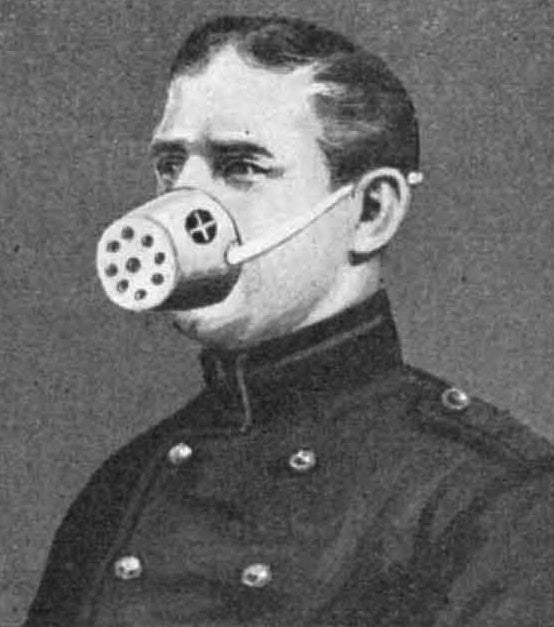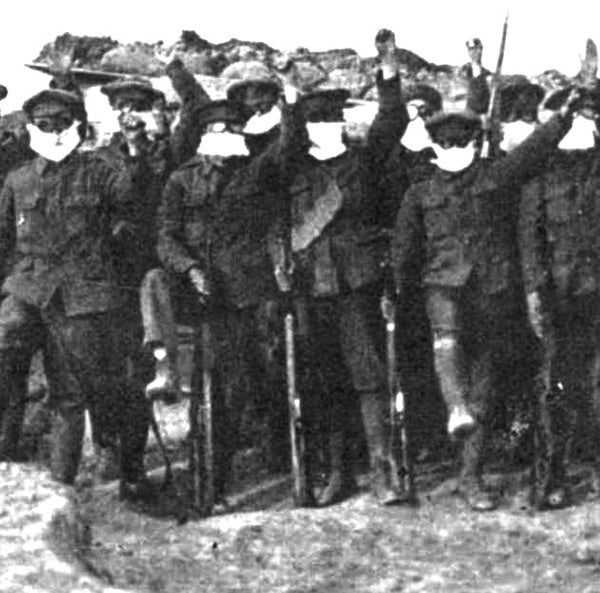This article was published in Scientific American’s former blog network and reflects the views of the author, not necessarily those of Scientific American
Reported in Scientific American, This Week in World War I: June 12, 1915
Germany (taking a cue from France) first used poison gas on a large scale against Allied troops manning trenches near Ypres, Belgium, on April 22, 1915. The gas was horrifically effective, killing and wounding thousands of soldiers in a matter of minutes. Our article quotes the May 3rd report from Sir John French, then the Commander-in-Chief of the British forces in France:
“The effect of this poison is not merely disabling or even painlessly fatal, as suggested in the German press. Those of its victims who do not succumb on the field, and who can be brought into the hospital suffer acutely, and in a large proportion of cases die a painful and lingering death. Those who survive are in little better case, as the injury to their lungs appears to be of a permanent character, and reduces them to a condition which points to their being invalids for life. These effects must be well-known to the German scientists who devised this new weapon, and to the military authorities who have sanctioned its use."
On supporting science journalism
If you're enjoying this article, consider supporting our award-winning journalism by subscribing. By purchasing a subscription you are helping to ensure the future of impactful stories about the discoveries and ideas shaping our world today.

An early Italian design for a gas mask. It has an exhaust valve for exhaling. Image: Scientific American, June 12, 1915
Eminent chemist J.B.S. Haldane was sent to France to investigate the gas and try to find a way of protecting against its effects:

British soldiers wearing an early form of gas mask: flannel pads and goggles. They were obviously good for morale, but I am not sure how effective they were against gas. Image: Scientific American, June 12, 1915
"The symptoms and the other facts, so far ascertained, point to the use by the German troops of chlorine or bromine for purposes of asphyxiation. There are also facts pointing to the use in German shells of other irritant substances [probably a reference to tear gas], though in some cases at least, these agents are not of the same brutally barbarous character as the gas used in the attack on the Canadians. The effects are not those of any of the ordinary products of combustion of explosives. On this point the symptoms described left not the slightest doubt in my mind."
The first defense was a simple flannel pad, soaked in chemical solutions (or, if necessary, urine) and held over the mouth. This defense had originated in the industries that employed or produced such gasses and was carried on board naval ships that carried lead-acid batteries (which could leak chlorine gas if the sulphuric acid electrolyte mixed with seawater). It was effective enough for short-term exposure to lower concentrations of gas, but not against prolonged exposure to gas during a battle; and there was no eye protection:
“The first form of respirator, supplied to the British troops in Flanders ... was based upon a pattern supplied by the Admiralty. Over a million of these respirators (made by voluntary labor), consisting of a covering for the mouth and nose of stockinette lined with cotton-wool, were sent out toward the end of April. These respirators, however, have not proved efficacious in warding off the evil effects of the gases when these latter have reached the trenches in a fairly condensed form, and Dr. Haldane has been sent out again to Flanders to experiment with various forms of larger respirators and head coverings of helmet shape, in which cotton wool or cotton waste soaked with chemical solutions can be employed.”
During the war 90,000 people, mostly soldiers but also some civilians, died of gas poisoning; in the years after the war, people continued to die from lingering effects of gas exposure sustained during the war.
-
Chemistry Goes to War: Our compilation of articles from Scientific American on chemical warfare from World War I to current wars is at https://www.scientificamerican.com/magazine/sa-classics/chemistry-goes-to-war/
Our full archive of the war, called Scientific American Chronicles: World War I, has many articles from 1914–1918 on the chemical aspects of the war. It is available for purchase at www.scientificamerican.com/products/world-war-i/